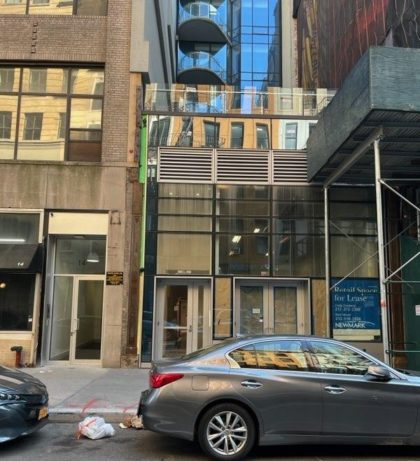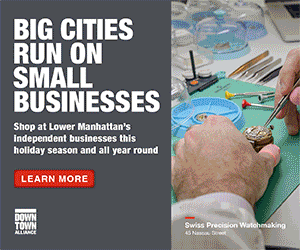Community Board 1 clarifies its cannabis dispensary rules
Community Board 1’s Executive Committee finalized its guidelines for how they will evaluate cannabis dispensary licenses, and while I am sure these rules will evolve, it’s a good place to start.
So far the board’s committees have approved three licenses: 16 Murray, 35 Wall and 378 Broadway (the last will be voted on tonight). But already there are shenanigans: the applicant who was approved at 16 Murray has switched her application to 30 Warren, and there are now new applicants at 16 who say they have a signed lease there. More on that later.
I will note that all this stuff is in flux and will have to evolve. (The 500-foot rule was invented by a colleague of mine on CB4 decades ago, in the early ’90s — Tim Gay — to prevent bars from clustering and creating a bar district. The guy was a genius among community activists. My point here being that these things were not always on the books, but they evolved out of community engagement.)
The state cannabis law is very easy to read in the original here. And it states that a cannabis retail licensee cannot have a storefront within
- 500 feet of a school grounds as such term is defined in the education law* (see footnote)
- 200 feet of a house of worship.
The Office of Cannabis Management has also created *guidelines* for retail dispensary locations, which are not regulations or part of the law, that says a school is “a building and its grounds occupied exclusively as a school.” Community Board 1 has rejected this additional definition as being arbitrary, unsupported in the law and inconsistent with the plain language of the original statute. And for the obvious reasons, it was not written with New York City in mind.
CB1 added additional stipulations to its guidance, which it is calling “distancing preferences.” If an applicant follows these guidelines, CB1 will be more likely to approve the application:
- 1000 feet from an existing cannabis dispensary (this is also part of the OCM’s guidelines)
- 1000 feet from a playground
- 500 feet from a public youth facility
- 500 from a park or public open space
- 500 feet from a harm reduction facility
(As far as teeth, the cannabis law states that it must make the opinion of the community boards and town councils across the state part of its formal review of a license, and also send a letter explaining how the community boards’ opinion was considered in the granting or rejection of the license.)
I will note that the applicants themselves are getting whiplash from the OCM rules. You have to have a lease before you apply, or at least a letter of intent with a landlord that can be executed within 30 days of getting your license. One of the owners of Mriya, which opened a Ukrainian art gallery and cannabis store on Reade thinking this would be the best approach according to the law, said the regulations have changed several times since he took the lease there and built out the former Gotham Bikes space. So what he thought was an acceptable approach has now already been rejected by CB1 for being too close to a school.
And this was an interesting piece of the law as well: “No sign of any kind printed, painted or electric, advertising any brand shall be permitted on the exterior or interior of such premises, except by permission of the board.”
FOOTNOTE: * This from the New York State Department of Education on what constitutes a school: “School grounds” means any building, structure and surrounding outdoor grounds, including entrances or exits, contained within a public or private pre-school, nursery school, elementary or secondary school’s legally defined property boundaries as registered in a county clerk’s office.















If we must live with the proliferation of marijuana use, at the very least then I think it’s time for rules/laws to restrict spaces where this drug can be smoked. It’s a psychoactive pollutant, and we should not be forced to breathe it on our streets, in our parks and plazas, etc.
Does the last law apply to illegal dispensary shops disguising as convenience stores? The neon signs at Top Shelf at 279 Church are offensive and disturbing at night to tenants living across the street. How do I get them to take them down or least turn them after a certain time?
No laws apply to those stores. They are illegal.
ALL can be reported online at both 311 AND
https://cannabis.ny.gov/report-an-incident
You will need the following information when submitting a complaint:
• Name of business
• Time of alleged illicit activity
• Location of alleged illicit activity
• Pictures of alleged illicit activity
• Indicate if there has been previous police contact (i.e., 911 calls)
• Proximity to sensitive use locations (e.g., school, house of worship, children playground/park)